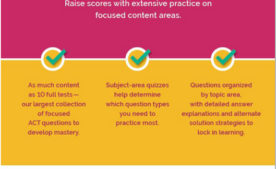We’ve all heard that the letter grade “C” is “average,” and once upon a time, this was true. However, by 2020, 90% of grades were either As or Bs, according to a report from The College Board. Truth be told, a C grade is almost unheard of on today’s student transcripts.
Are today’s students smarter? Has school gotten easier? Are teachers more lenient?
Welcome to the era of grade inflation. Many sociologists point to the 1960s as the start of modern grade inflation in higher education: at that time, above-average grades in college coursework could exempt young men from being drafted for the Vietnam war, and professors were anxious to save their students. However, some research indicates that grades were already on the rise by the late 19th century. Harvard historical records show in an 1894 study entitled, “Committee on Raising the Standard” that “in the present practice Grades A and B are sometimes given too readily.
Aside from the desire to save a student from the horrors of war, many other well-meaning factors may contribute to grade inflation. Teachers may feel compelled to support a student whose heart is clearly in the right place or who is disadvantaged in some way. There may be outside pressures on educators, such as district policies or the need to compare favorably against other schools. Teachers may grade less stringently because they are loath to negatively impact a student’s college admissions options, or out of a desire to avoid parent complaints. Certainly, the COVID pandemic and all the challenges it brought with remote learning has contributed to grade inflation, through no fault of the teachers.
We may never definitively identify the causes of the grade inflation trend, but the fact is that grades at all levels have increased noticeably over time.
Grade Inflation: The College Admission Conundrum
Students in their pre-college years face a different concern. Grade inflation has made it harder for college admissions teams to distinguish between applicants. Without standardized test scores from every applicant, they are taking an even closer look at course selection and academic rigor.
How can students with good grades set themselves apart? Taking and performing well in rigorous courses (e.g. honors, accelerated, AP) will help an applicant stand out in a competitive admissions environment. Colleges are most concerned with your ability to handle academic rigor at their schools, and good grades in challenging courses demonstrate that ability.
Furthermore, students are submitting SAT and ACT scores to help make their applications stand out. Test-optional does not mean test-blind and admission officers know that these scores provide a common, consistent point of comparison between applicants. Admissions offices will look at submitted test scores in concert with your grades and course selections, providing an additional data point to demonstrate readiness to meet the academic demands of their schools.
How can we help set our students up for success in the college application process?
Academic rigor is critical. Not only is it the future of college admissions decisions, but rigor is also the key to ensuring that our students leave high school well-prepared for college. We need to encourage students to challenge themselves with a balanced approach to pursuing greater learning while providing them with the support they need to be successful.
We’re here to help. Summit offers one on one academic tutoring programs to support and enrich students who want to take on more challenging content. From AP and subject tutoring to accelerated math and writing programs, we are committed to helping students grow and excel.
Questions? Contact us at info@mytutor.com or 1 (800) MY-TUTOR.




















